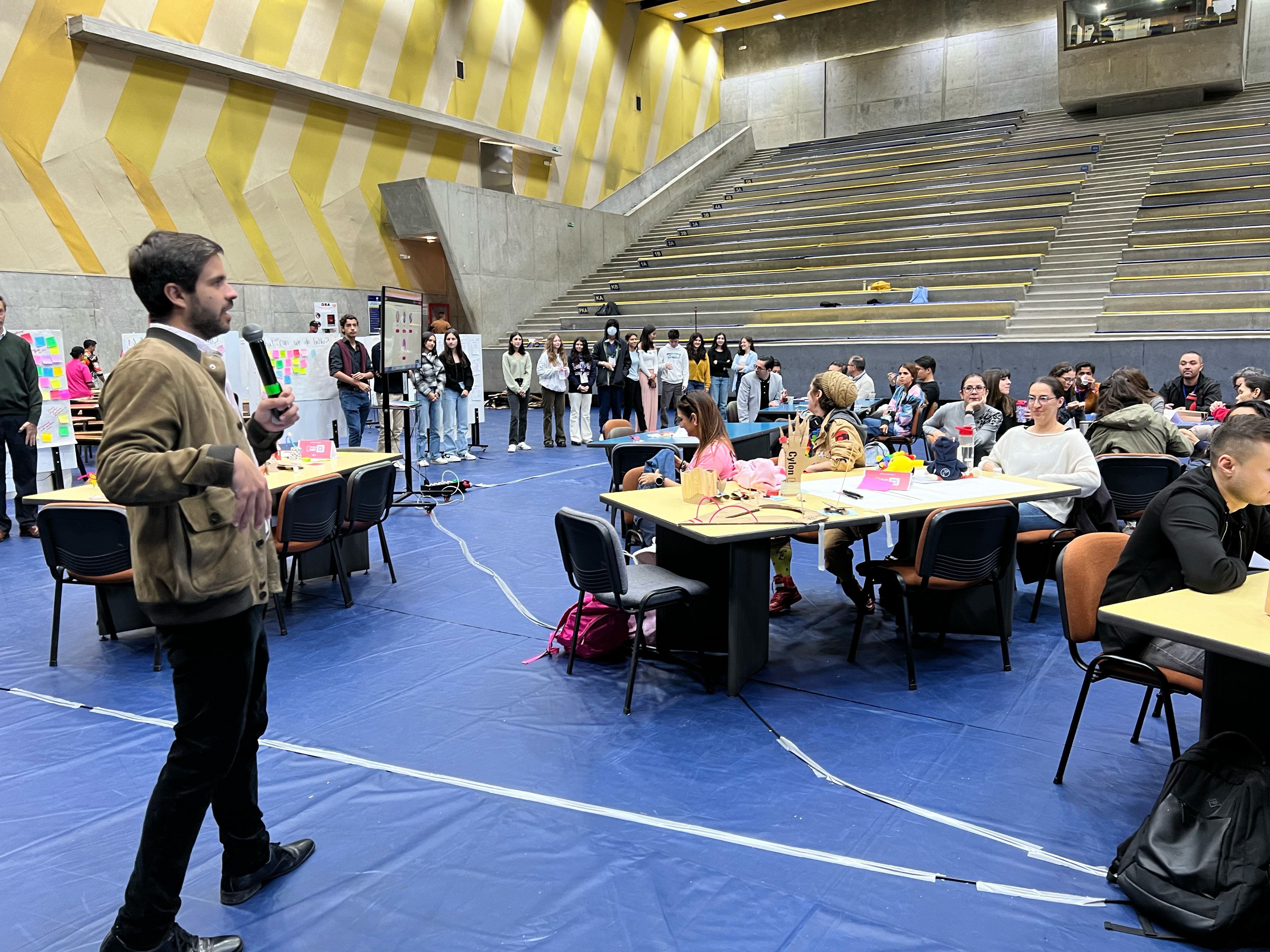
At Gimnasio Los Caobos, a K-12 private preparatory school located in the Municipality of Chía, Cundinamarca, within the Metropolitan Area of Bogotá, Colombia, creativity and innovation are taking center stage. Through a partnership with NuVuX, the school is amplifying its design and interdisciplinary goals, empowering students and teachers alike to think beyond traditional boundaries. We sat down with Gabriel Diago, Co-founder/Director of the school, to learn how NuVuX is shaping the school’s culture, sparking new opportunities across K–12, and preparing students to thrive as problem-solvers in a rapidly changing world.
Caobos' Vision & Goals -
Q: What inspired your school to partner with NuVuX, and how does this collaboration align with your long-term vision for creative and interdisciplinary learning in Gimnasio Los Caobos?
Gabriel:
The decision to partner with NuVuX arose from the desire to go deep in the transformation of our students' learning into a creative and interdisciplinary process, where students can imagine and build real solutions for the world.
We saw in NuVuX a proposal that fully aligns with our vision of forming students who think critically, collaborate with others, and put their knowledge into practice in authentic and dynamic contexts. This collaboration enhances our long-term commitment to our PBL educational model focused on innovation, research, and social projection—integrating experiences that transcend traditional classroom boundaries and preparing students to lead change in their communities and beyond.
More on Caobos' Interdisciplinary Approach -
Q: How has NuVuX helped your school break down traditional subject silos and create new opportunities for students to work across disciplines?
Gabriel:
NuVuX has complemented us with models and tools to help us to re imagine and think deep in the application of our PBL methodology, allowing students to tackle complex problems from multiple perspectives.
For example, considering the studio methodologies, we have go deep in the designing of experiences where the projects integrate subjects such as science, technology, humanities, and the arts, erasing disciplinary boundaries and opening new possibilities for collaborative learning in our students and teachers
Caobos' Focus on Student Experience -
Q: Can you share an example of a student project or learning moment that reflects the creativity, innovation, and problem-solving that NuVuX studios encourage?
Gabriel:
One example that embodies the NuVuX spirit is the work of the Caobos Rocket team in the Odyssey Competition (a project that we've carried out for three years), where students applied critical thinking, creativity, and technical skills for programming Drones and build a Rover that let us be champions of the competition in different categories.
This achievement is not only the result of technical knowledge, but also of the students' ability to devise original solutions, work as a team, and overcome real challenges—exactly what we seek to nurture in the future in other areas and school's projects through the partnership with NuVuX.
Focus on Teacher Growth -
Q: How has the partnership supported your teachers in shifting their practice and developing new ways of engaging students?
Gabriel:
The alliance with NuVuX has been a challenge and a driver of professional development for our teaching staff. Our teachers have received training in studio learning methodology, managing to adopt more dynamic and student-centered strategies and how to be part of them.
This has fostered a culture of pedagogical reflection, co-creation, and openness to educational experimentation, resulting also in a progressive transformation of our role as educators and the way in which we can be allies in the designing of new educational experiences.
Connection to Community & Culture -
Q: In what ways has the NuVuX approach influenced your school’s culture, both within the classroom and in the broader school community?
Gabriel:
Caobos culture has been linked to “learning by doing” mentality for so many years. Our vision, has been complemented but not replaced by NuVuX mindset. Our PBL methodology mixed with NuVuX studios inside and outside the classroom, has given us a challenge in which we must understand them as complementary efforts that are moving to consolidate a learning environment where mistakes are seen as opportunities, collaborative work is valued, and everyone’s ideas matter.
This perspective has strengthened the sense of community, promoting active participation not just among students and teachers, but also among families and external partners, specifically in the reflection about completing ideas. Not NuVuX as a replacement of our core methodology.
About the Local Context -
Q: How does implementing NuVuX at your school connect with Bogotá’s unique culture, challenges, or opportunities?
Gabriel:
Implementing NuVuX in Caobos has meant preparing students to address the society's specific challenges and seize its unique opportunities: from social entrepreneurship to technological solutions applied to urban and environmental issues.
As I've explained in the mix of our PBL with studios, Through contextualized projects, young people are able to connect their learning with their actual environment, promoting social awareness and a sense of belonging to their local community (Chia and Colombia) and also thinking about the global challenges that world is calling to be solved
Looking Ahead -
Q: What are your hopes for the future of this partnership, and how do you see NuVuX shaping the next generation of learners in Colombia?
Gabriel:
Our greatest hope is that this partnership inspires more schools in Colombia to embrace active, creative, and socially impactful learning models. We believe NuVuX will be key to consolidate a new generation of committed, resilient students, capable of creating transformative solutions for the country and the world. We aim to expand our vision, deepen the partnerships, and multiply opportunities for students to grow as agents of change, integrating learning, innovation, and social engagement
